

Great Eastern Railway (GER)
By Brian Ecott
The Eastern Counties Railway line built 1836 passed through Ilford to the London terminus at Shoreditch. Various lines were appearing throughout Essex and Middlesex. In 1862 by an Act of Amalgamation the various railway companies in The Eastern Counties were merged to form the Great Eastern Railway (GER) terminating in Shoreditch, London.
Uniform buttons and cap badges

Split pin uniform Pewter buttons, 17mm., 22mm. and 29mm. diameter, were general issue.
A dragon wing features on the buttons which comes from the Supporters of the City of London civic arms. "Golden" uniform buttons were probably for management or supervisors.

17mm diam.
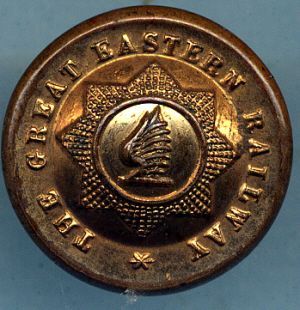
22mm diam.
GER Luggage and Freight labels
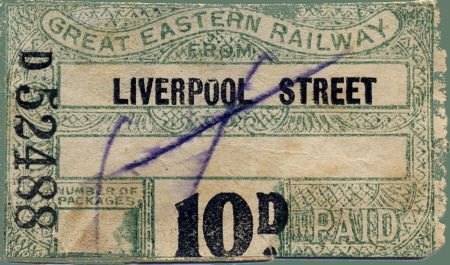
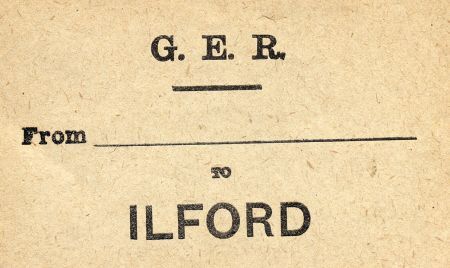
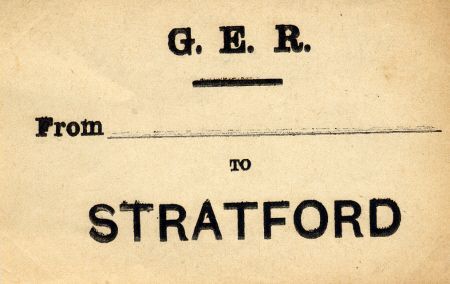
Old Ticket stubs

Aug 17 1907 1896 July 6 1907
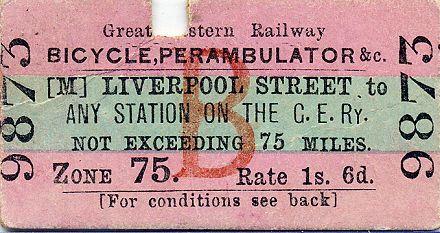
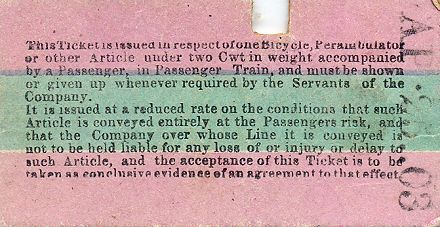
Bicycles and Perambulators were carried up to 75 miles for 1/6d on April 25th 1903
GER Shoreditch Terminus
moves to Liverpool Street in 1871
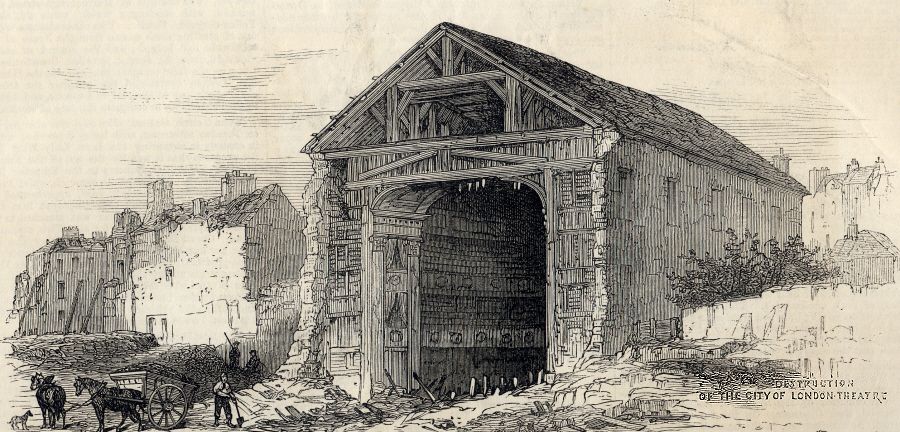
"Destruction" of the City of London Theatre.
Illustrated London News Oct. 28th 1871
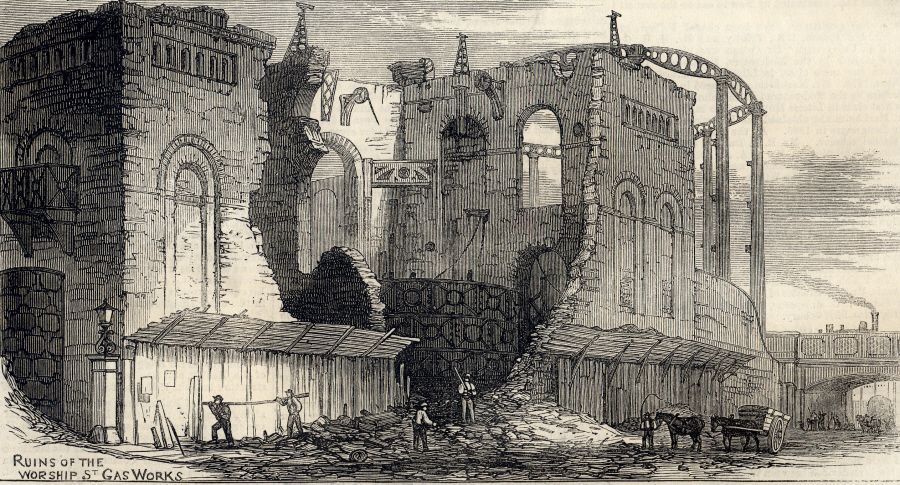
Ruins of the Worship Street Gas Works
Illustrated London News Oct. 28th 1871

View from Liverpool Street of new City station at Broad Street
Illustrated London News Oct. 28th 1871
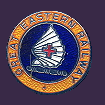
LIVERPOOL STREET STATION
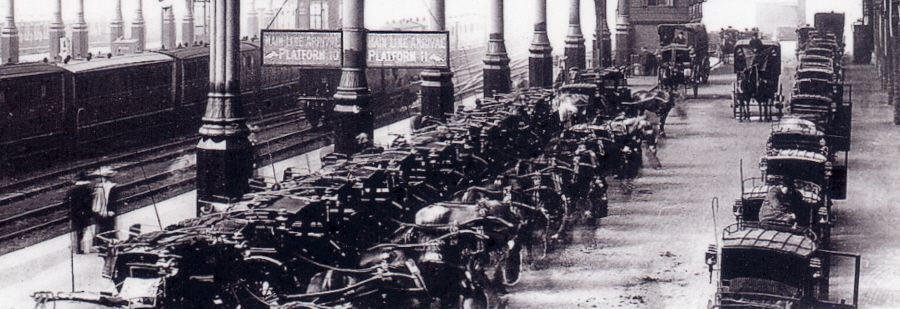
Early view of Liverpool Station with horse and cabs awaiting passengers arrival.

Men with bowlers, pipe smokers, top hats, Edwardian ladies and chocolate machines at Liverpool Street Station
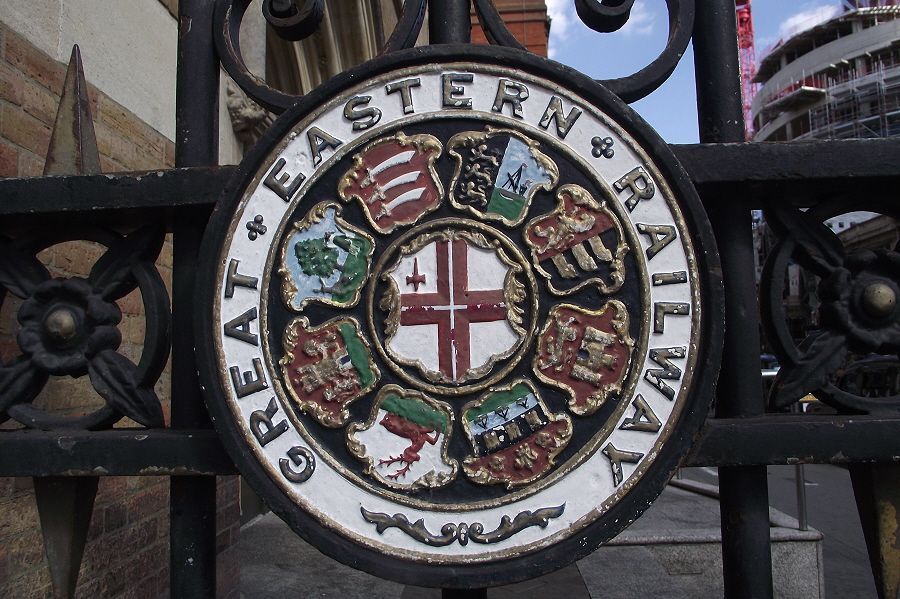
The complex Great Eastern Railway Logo affixed to the iron railings outside Liverpool Station showing Counties and Towns served. Picture taken in 2018.

Civic arms on the Great Eastern Railway logo represented the City of London, Essex, Maldon, Ipswich, Norwich, Northamptonshire, Cambridgeshire, Hertford and Huntingdon.

A fifties picture showing platforms 12 and above which still serve Local services, Norwich and East Coast resorts.
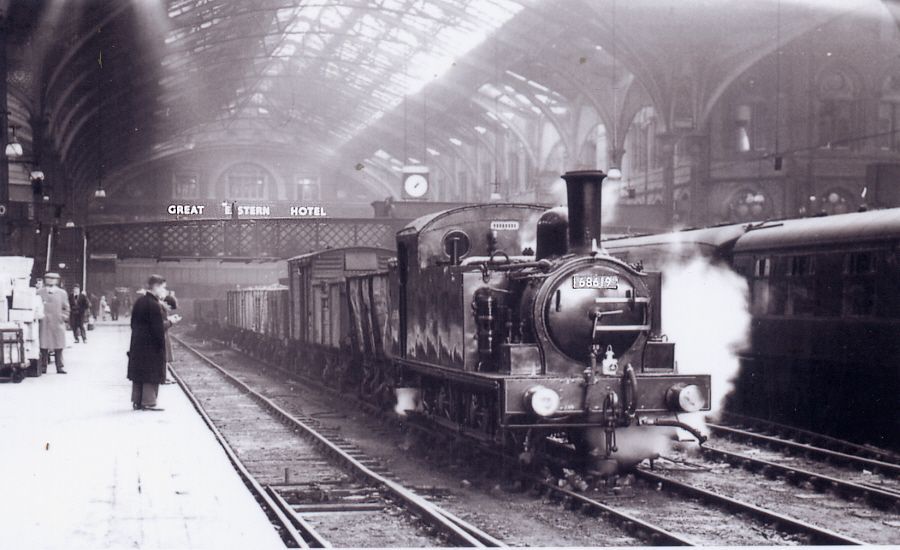
Liverpool Street Station J69 0-6-0 68619 pulling goods.
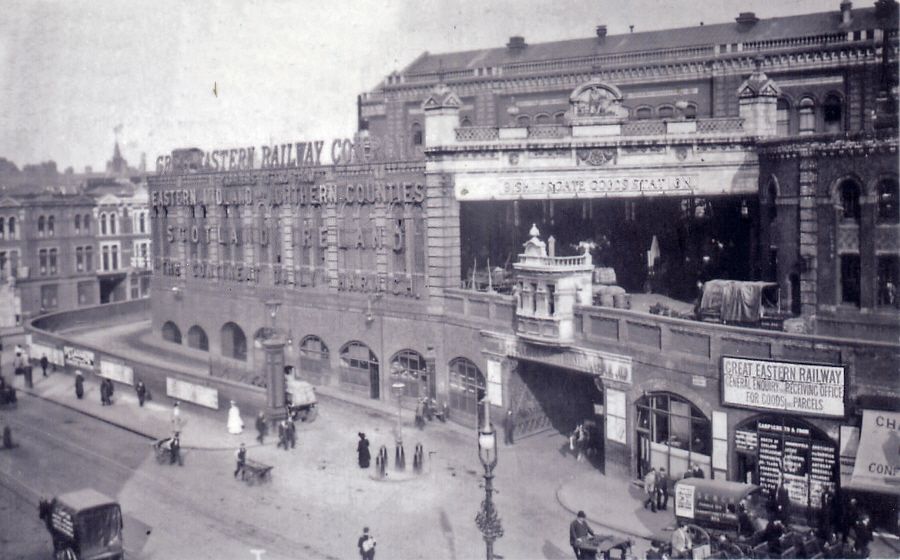
Early picture of Bishopsgate Goods entrance.
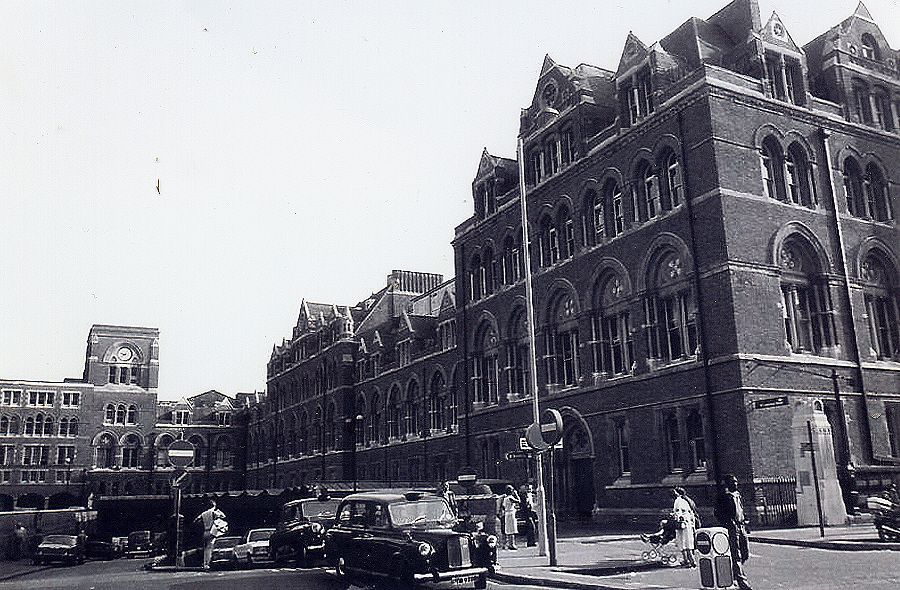
The Great Eastern Hotel, Liverpool Street.
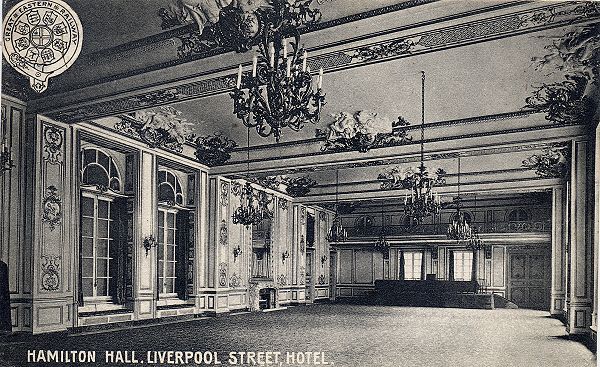
Postcard of Hamilton Hall, postmarked July 5th 1905.
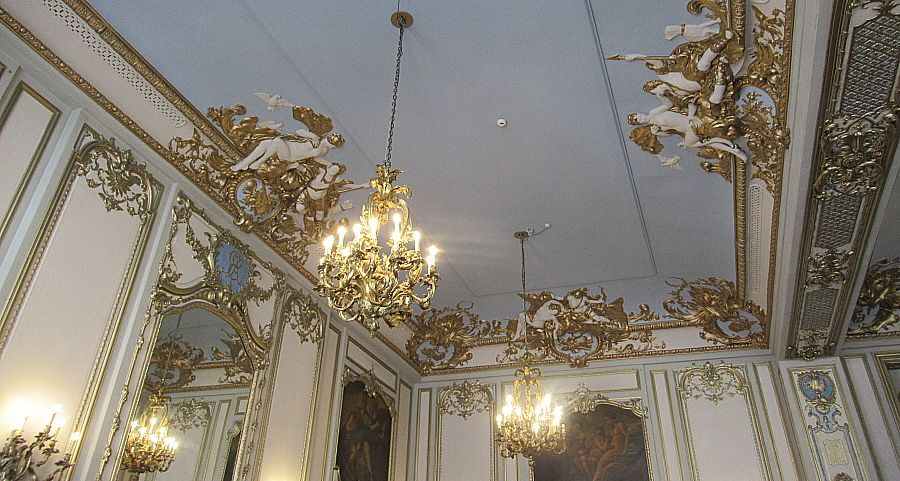
Interior of Hamilton Hall today (2018).
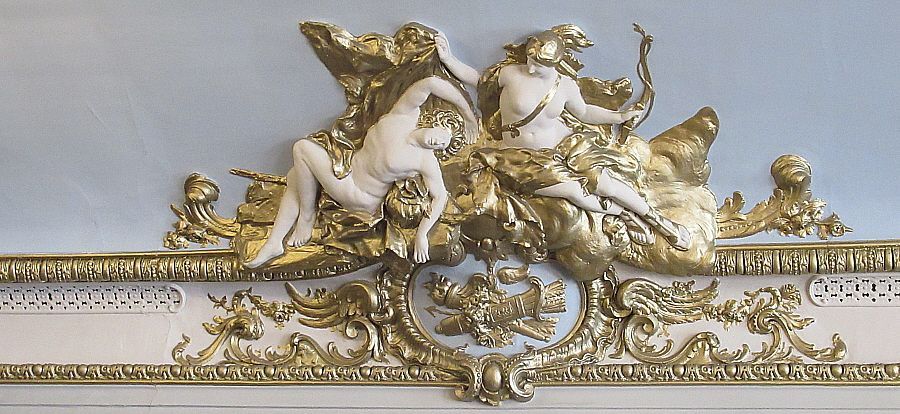
Beautifully maintained and now used by J D Wetherspoon.
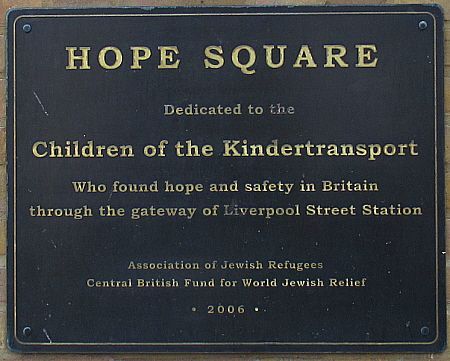
Liverpool Street was the arrival point for children, refugees from Europe who docked at Harwich. Kindertransport was the name given to the mission which took thousands of children to safety ahead of World War Two (1939-1945). It helped 10,000 children to escape from Adolf Hitler's reign of terror in parts of Europe controlled by the Nazis. It is called this as 'kinder' means 'children' in German.
Sir Nicholas George Winton MBE born Wertheim; 19 May 1909 – 1 July 2015) was a British humanitarian who established an organization to rescue children at risk from Nazi Germany.
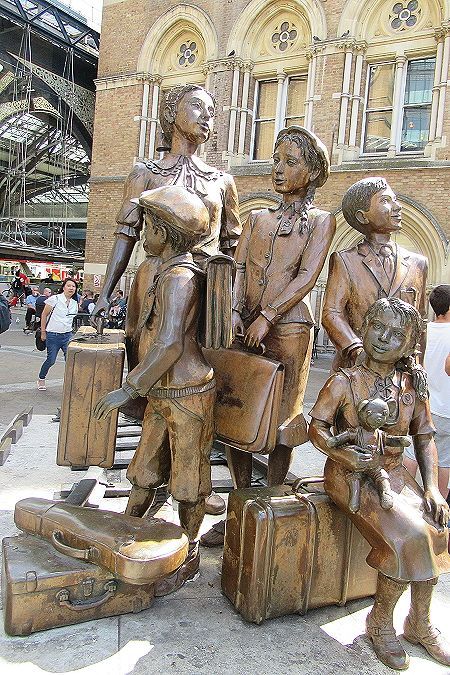

STRATFORD WORKS
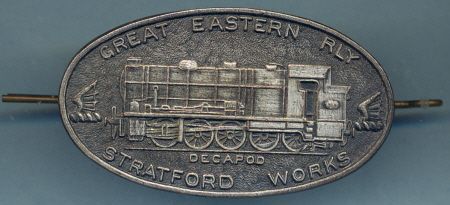
G E R Cap Badge
Stratford (London) Works.
57mm wide.
The Decapod 0-10-0 Class A engine (depicted on the cap badge) was built in 1903 at Stratford and tested at Chadwell Heath. The threat of electrification at this time prompted faster steam engines
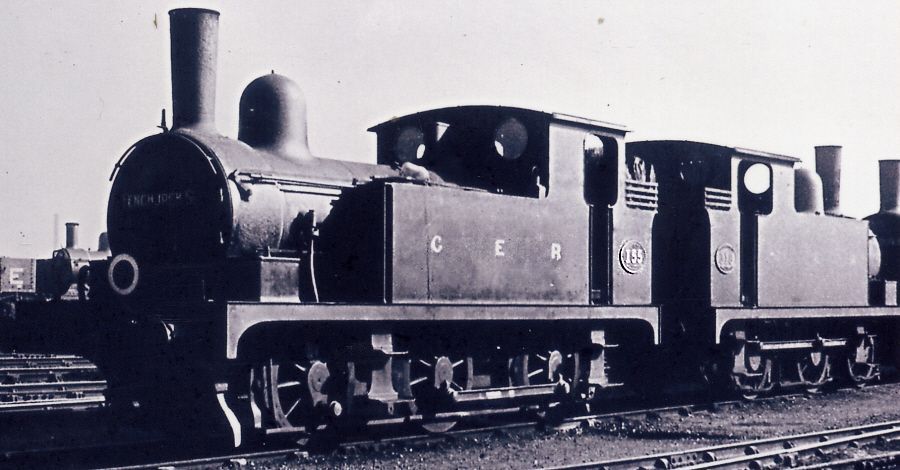
Stratford Works yard.
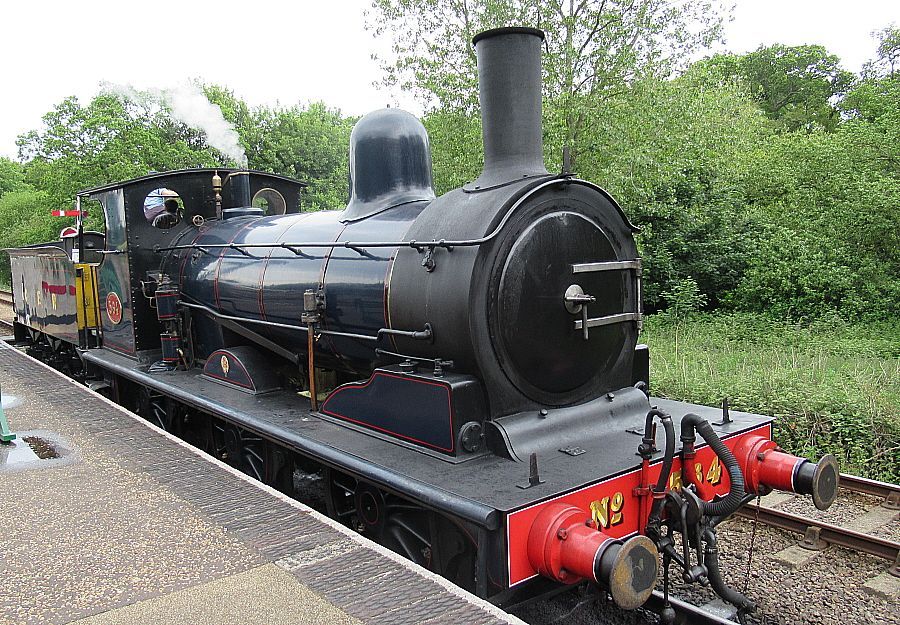
Arrival of GER Locomotive 564 Class Y14 0-6-0 at Holt Station, North Norfolk Railway 29th May 2019.
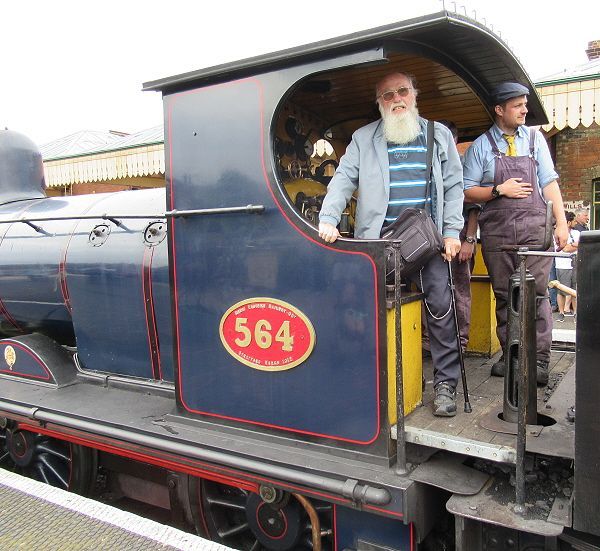

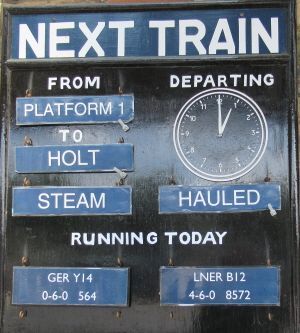
I couldn't resist leaping on to this engine at Sheringham Station, Norfolk while holidaying there in 2019. I was eleven years old when the LNER Ilford - Woodford Loop Line closed and the Central line opened.

The engine was built at Stratford London Works in 1912.
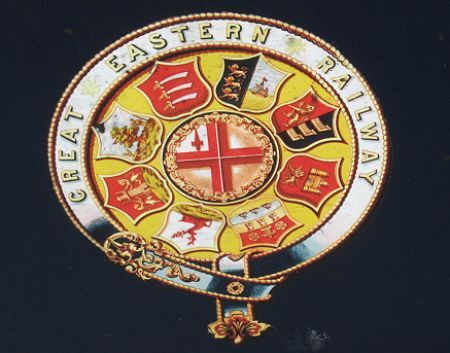
Logo of the Great Eastern Railway Co.
The Fairlop Loop Line 1903 - 1948
ILFORD to WOODFORD

ILFORD STATION
Visitors to Ilford Station will no longer the older structures shown in the following pictures. The station buildings were demolished early 2020 to make way for the Elizabeth Line (Part of Crossrail).
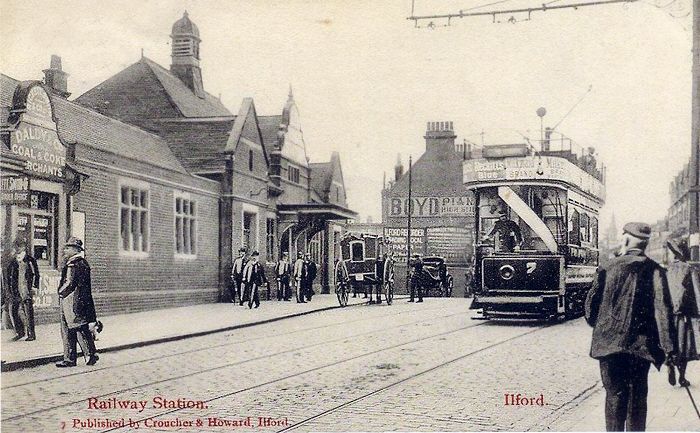
Ilford Station early views.
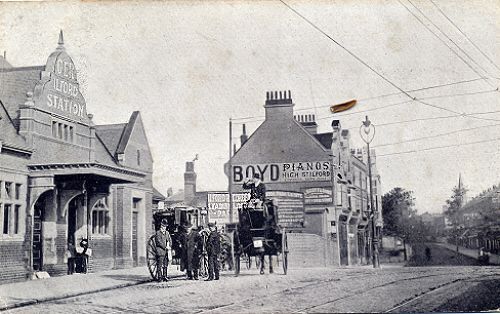
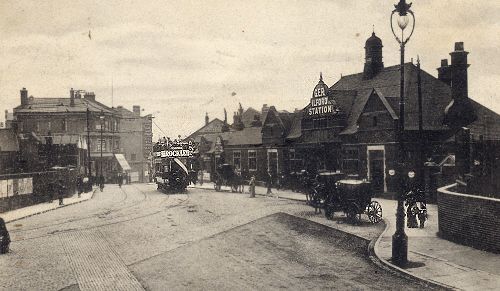
Ilford Ticket stubs
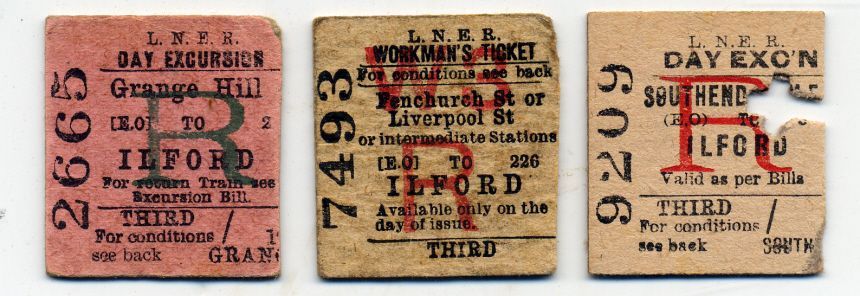
Sep 1928 16 June 1928 6th June 1949
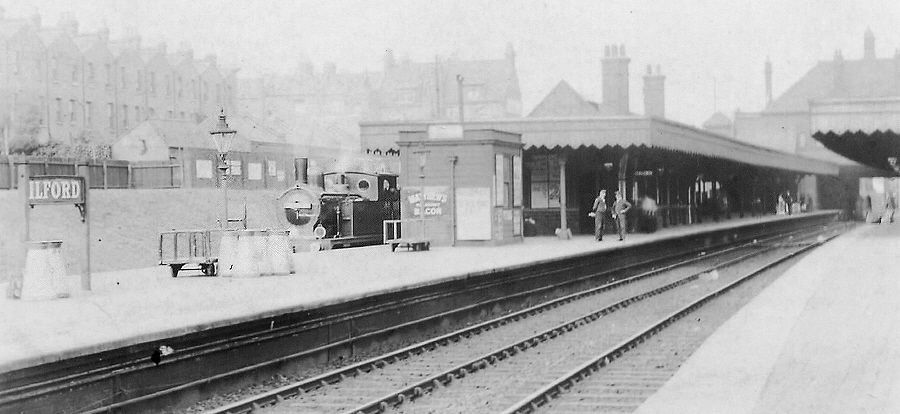
The engine just visible behind platform 5 is for the local train for the Hainault Loop. The engine has two tracks at the platform where it can couple and uncouple the carriages, but no turntable.
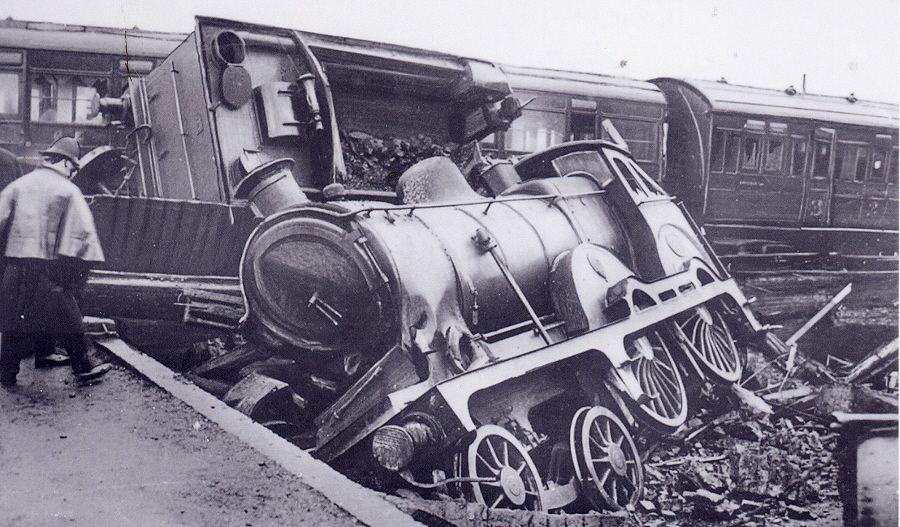
On New Year's Day 1915 the 7.06am express train from Clacton was running late and missed the danger signals at Ilford Station where a local train was crossing in front of it. Casualties and more stories can be found online. This eventually resulted in a viaduct carrying trains over the fast line.
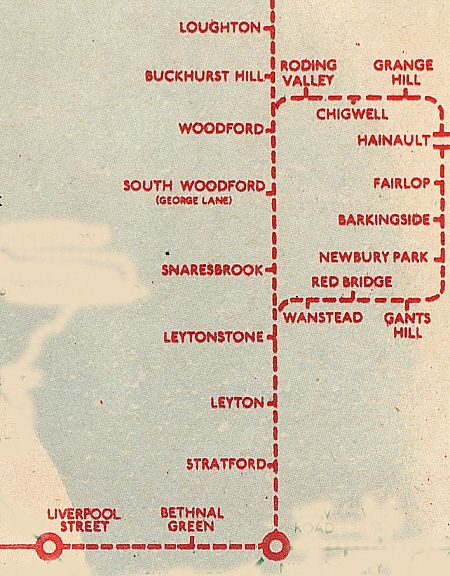
An Underground map of 1939 shows plans for electrification of the line from Liverpool Street to Epping and Ongar, and additional underground stations built at Wanstead, Redbridge and Gants Hill linking Leytonstone, and severing the Ilford - Newbury Park line. Work was almost completed on the underground section when war broke out in September 1939.
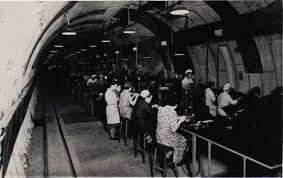
The almost completed Central Line tunnels proved useful during the war years when Plessey munitions factory was able to secretly occupy the space until electrification was complete for the opening in 1948.

NEWBURY PARK STATION
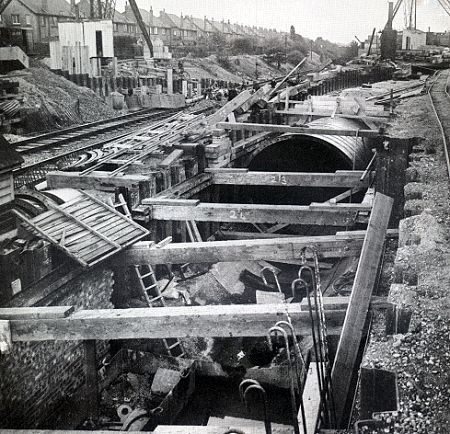
Tunnelling for the Central line. Stainforth Road, Newbury Park is in background.
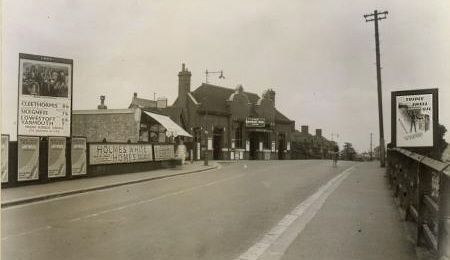
Newbury Park station in Hatch Lane, which became the A12 after redevelopment of the area.

Later view where the modern bus station can be seen.
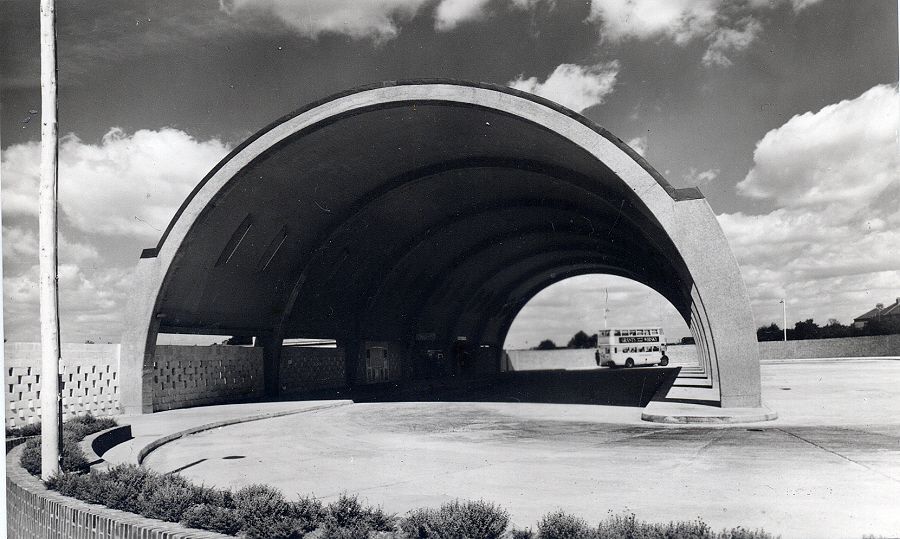
A view of Newbury Park Bus Station.
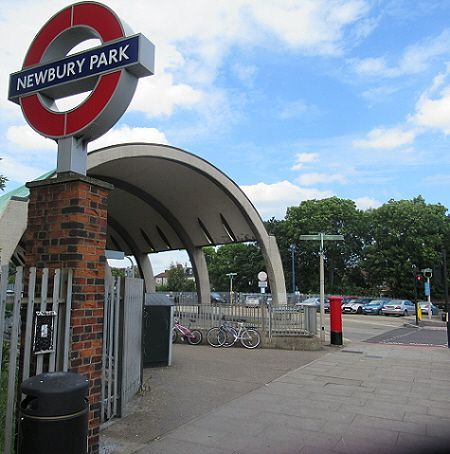
Newbury Park Bus Station won an Award of Merit in 1951 organised by the Festival of Britain.
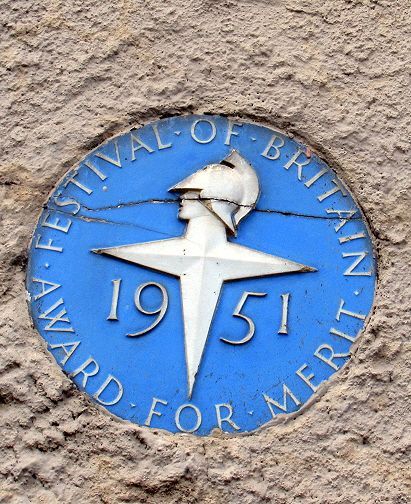
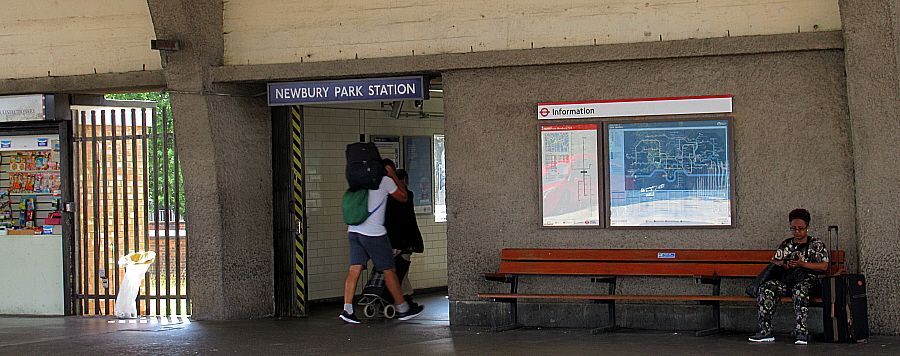
Station entrance in the covered bus station, 2019.
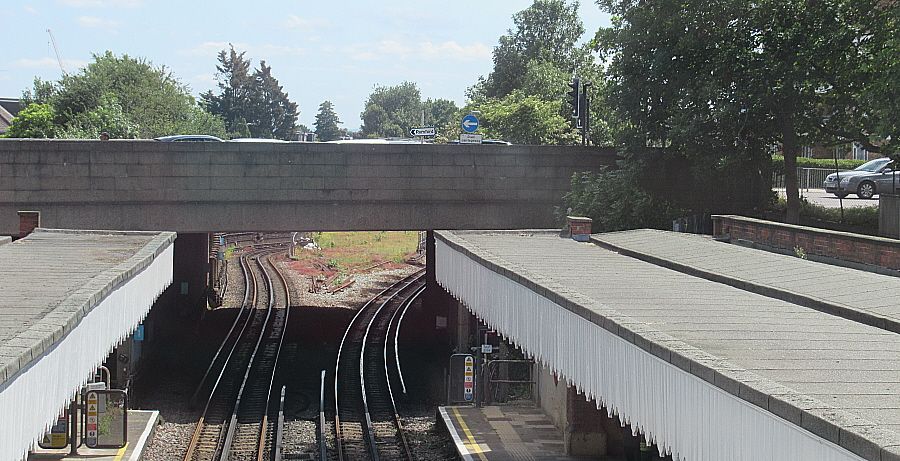
The original GER roof awnings cover both platforms, The bridge now carries the A12 Eastern Avenue
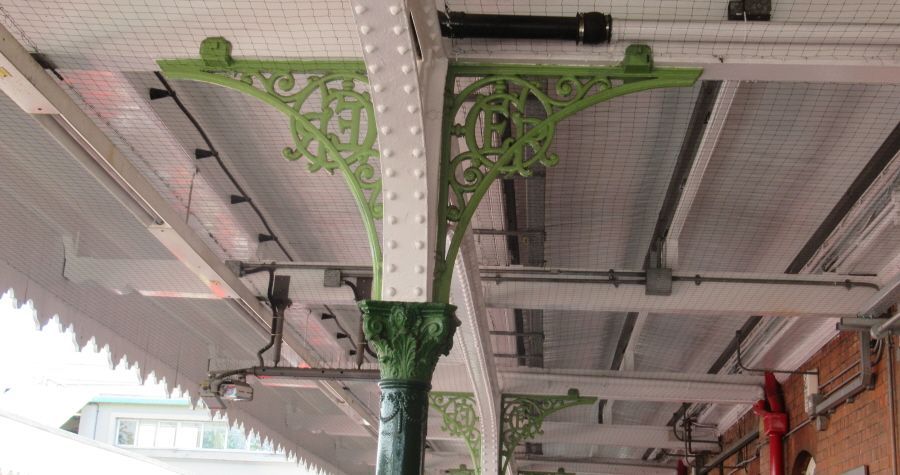
The original ornate columns and roof supports showing the GER logo. 2019.
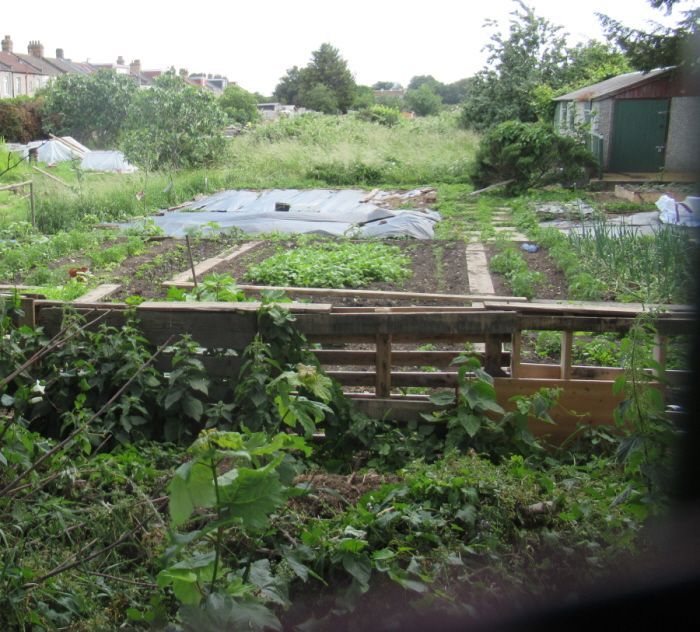
The abandoned line is now used for allotments. View taken from an old bridge in Wards Road. 2019.

BARKINGSIDE STATION
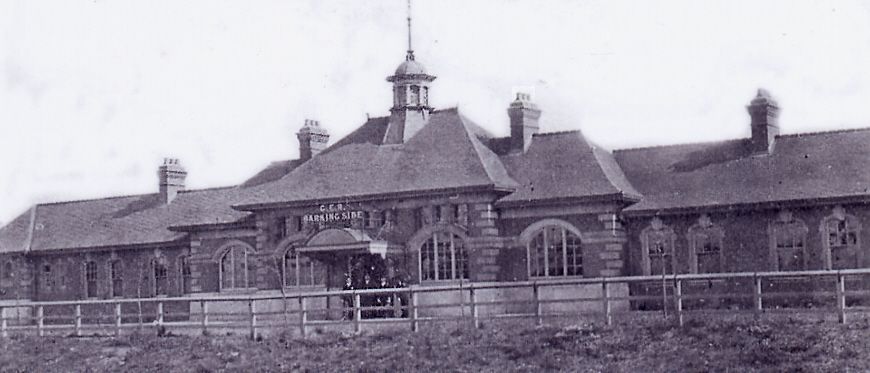
Barkingside Station

An ex GER 2-4-2T locomotive and train arriving at Barkingside from Hainault, in the 1930's.
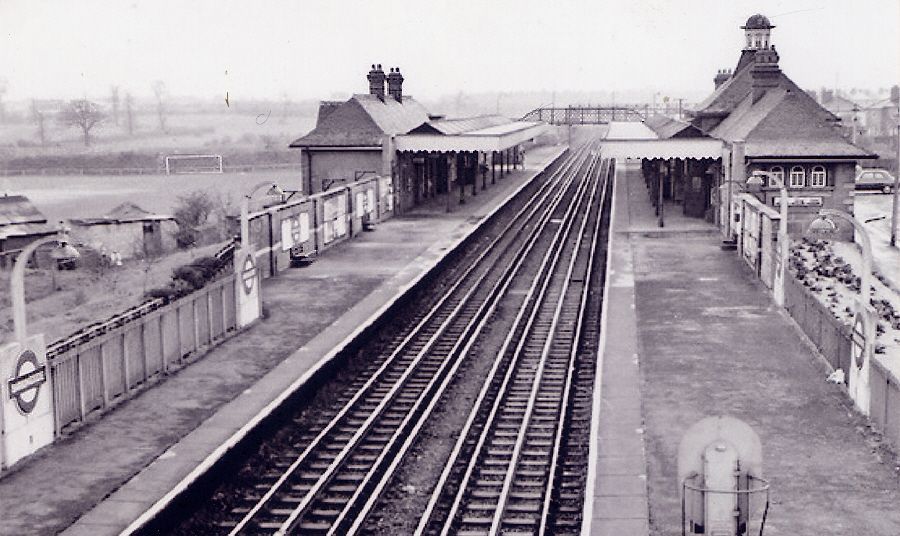
Barkingside station 1960. View towards Newbury Park. © B. Brooksbank
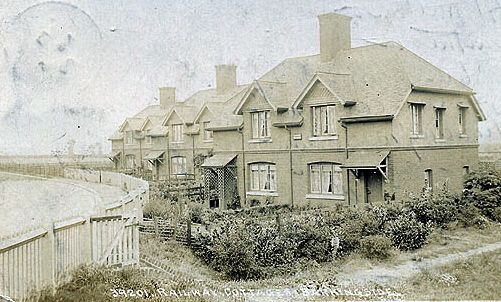
Former Staff Railway Cottages.

Funeral of Doctor Barnardo arriving at Barkingside Station for the Children Home. Dr Thomas Barnardo died in his home in Surbiton, Surrey on 19th September 1905. His funeral cortege left his home for Liverpool Street on 27th September where he was carried to Barkingside.
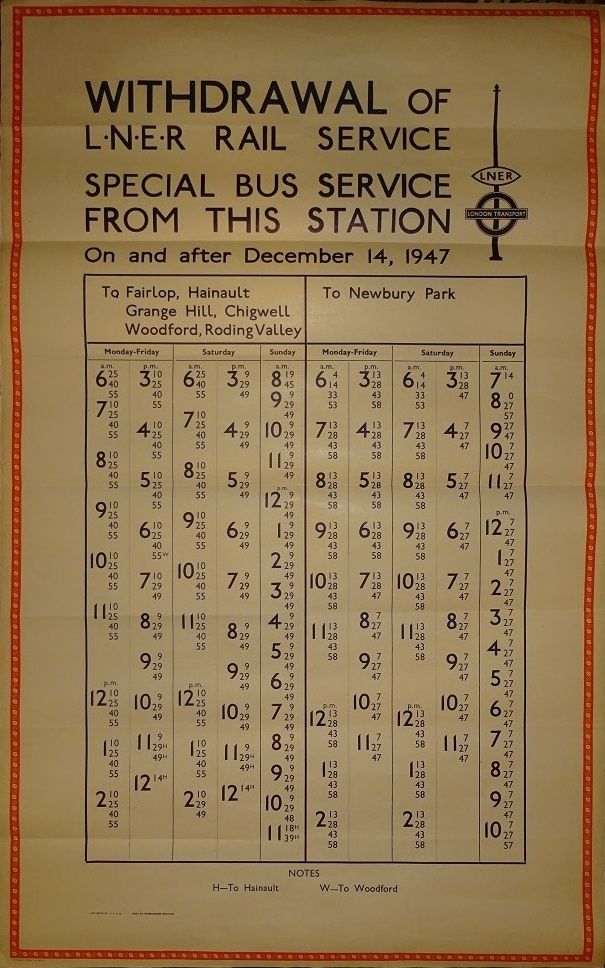
This poster was put up at Barkingside Station timetabling the special bus service after the closure of the LNER December 14th 1947 and the Central Line electrification and services Commencing in 1948.
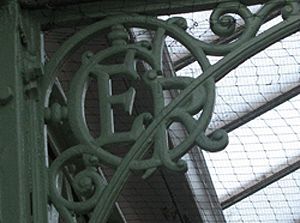
The Great Eastern Logo G E R is still seen supporting the platform roof on many stations on this line following electrification in 1948.

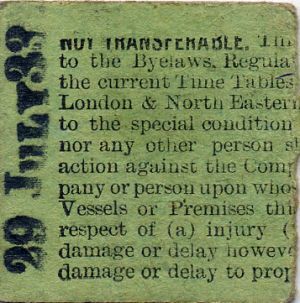
Third class CHEAP DAY ticket issued 29th July 1933 Barkingside to Liverpool Street via Ilford.

FAIRLOP STATION

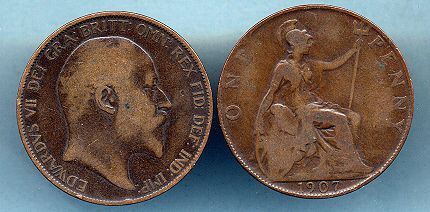
Train ticket 3rd class Fairlop to Grange Hill 1d. 30th March 1907. A one penny coin 1907. Both the penny and the train ticket were 30mm in height. 12 pennies = 1 shilling, and 240 pennies = £1. A 4lb loaf of bread cost 5d or 6d. in 1907. The d. for a penny stood for the Roman denarius
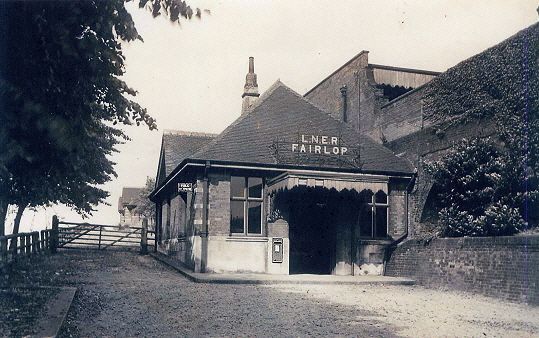
The station entrance at Fairlop has little changed since 1903. The original entrance to Hainault station was built to the same design.
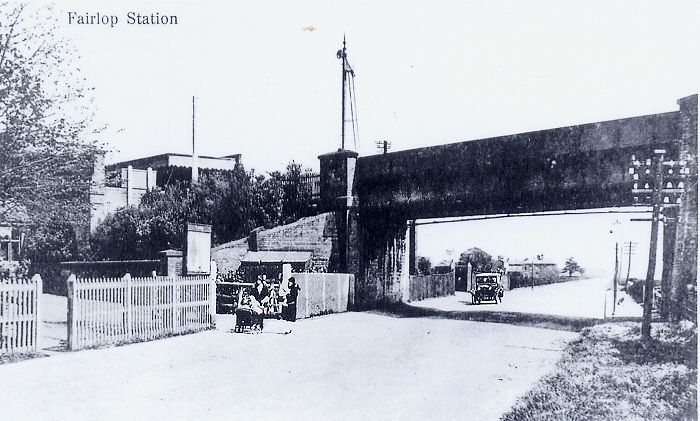
Forest Road looks rural here and the low bridge still causes many high loads to crash into it.

HAINAULT STATION
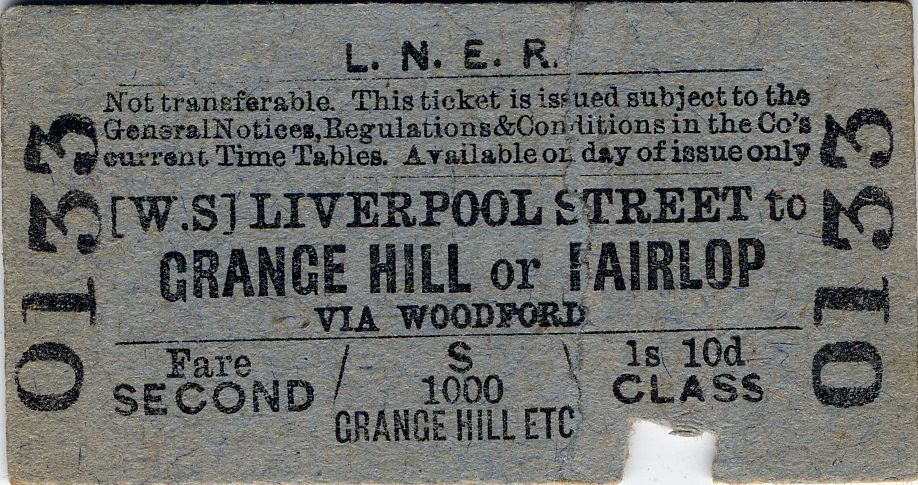
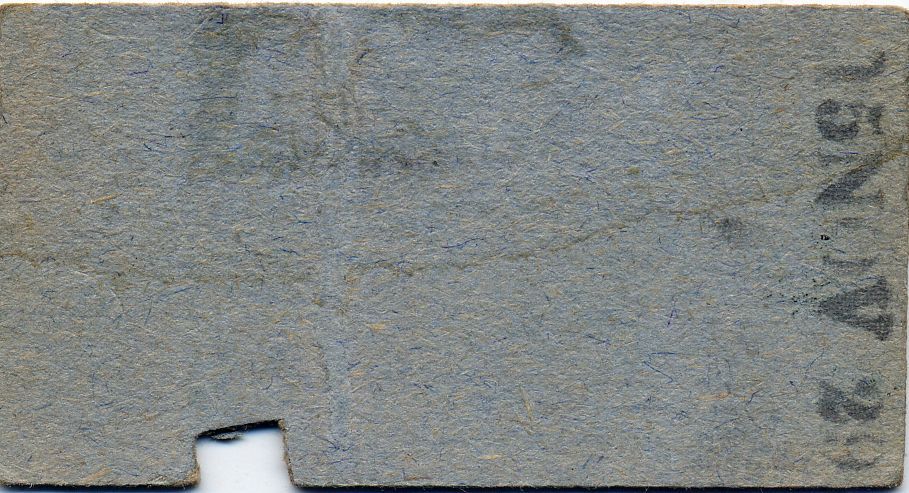
The ticket above from Liverpool Street to Grange Hill or Fairlop was issued 15th November 1929. Although the main station on the loop line, Hainault Station closed on 1st October 1908 five years after opening and didn't reopen until 1930.
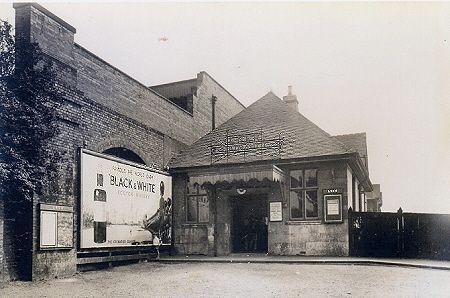
Two views of the Station entrance built in the style of Fairlop. There were two platforms prior to electrification in 1948.

I remember the last steam train to leave Hainault around midnight when the staff affixed fog signals which went off bang as the train passed over them. I was 11 and lived in Franklyn Gardens.
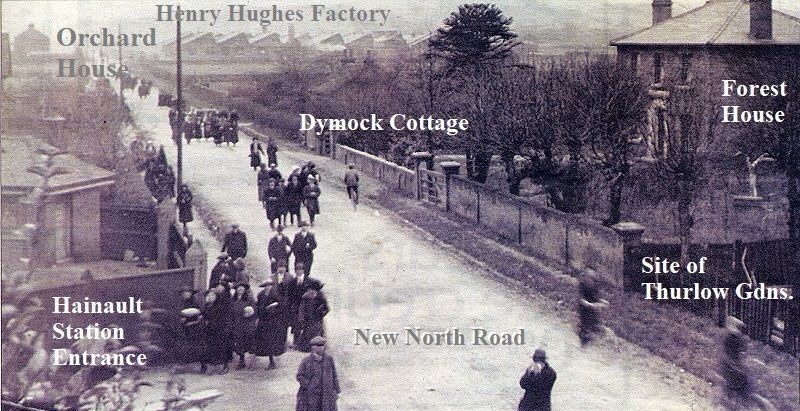
View taken from the bridge over New North Road in the early thirties when Hainault Station was reopened. Passengers seen here are walking down New North Road from Henry Hughes new factory (later Kelvin Hughes and Smiths Industries Factory now demolished for housing) in the background. Around 1935 building work started developing Thurlow and Franklyn Gardens.
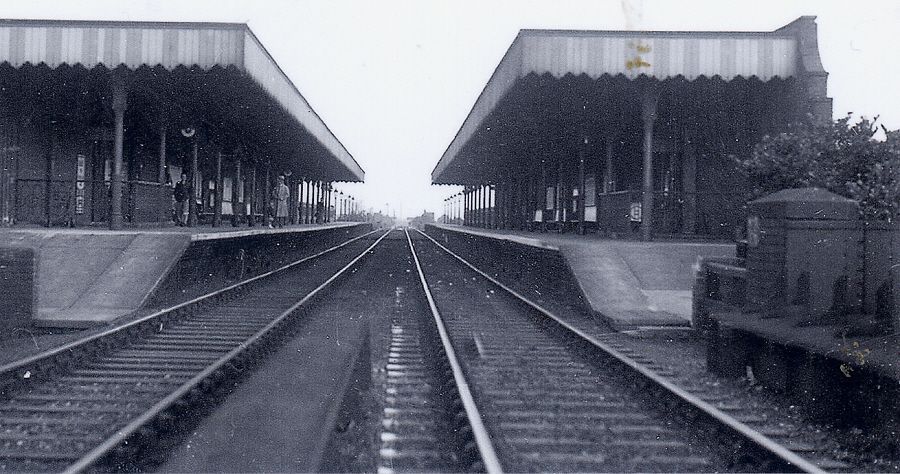
Although trains arriving at Hainault for Ilford had small carriages, a visionary in 1903 must have foreseen the need for much longer platforms by the 1950's.
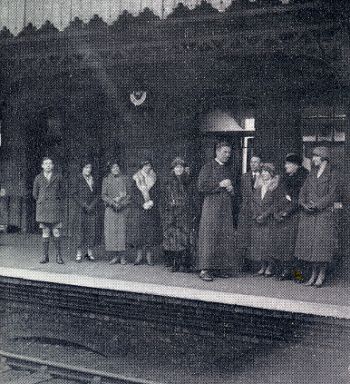
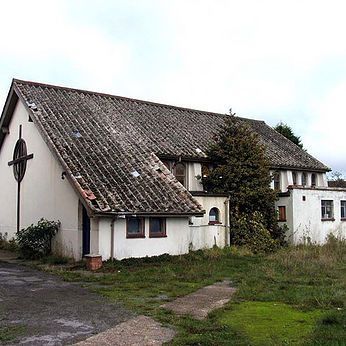
St. Francis of Assisi Church, Barkingside. Services have been held in the Parish since February 1934 when the first service was held in the waiting room of Hainault Station. In 1938, two halls were built on the existing church site at Fencepiece road with one acting as the temporary church until 1956, when a brick building designed in a traditional style by J. J. Crowe, was built and consecrated.

Munya stands by the WW2 Tank Traps protecting Hainault Station 2010. Some of the pillboxes and tank traps can be seen. One pillbox near Fairlop has been sealed to provide a bat sanctuary.
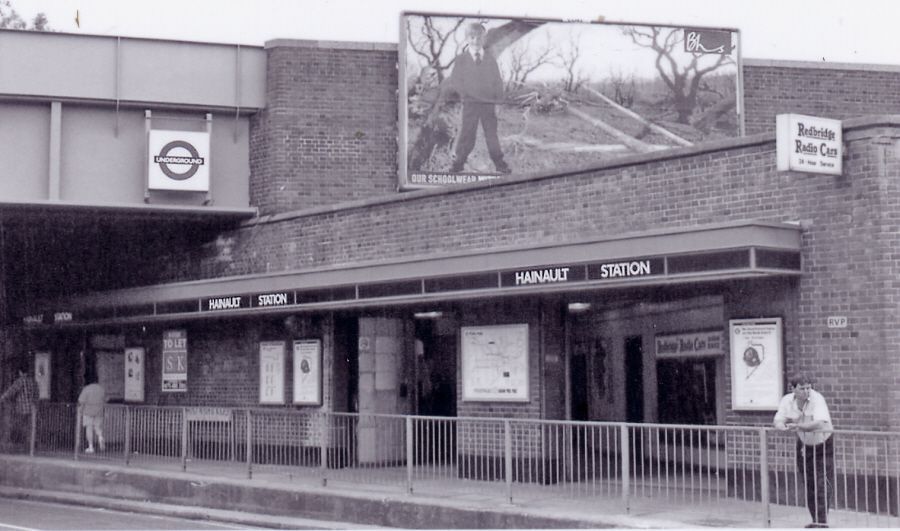
Modern station entrance. The road was lowered in the fifties to allow double decker buses to pass under. Recent years have seen lifts installed to access the platforms.

GRANGE HILL STATION
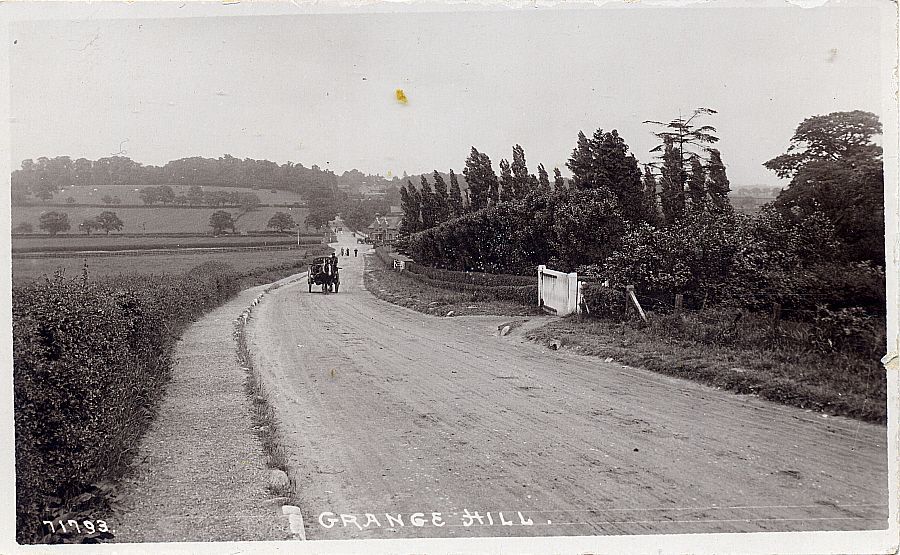
Grange Hill towards station from Bald Hind. 8th November 1912.
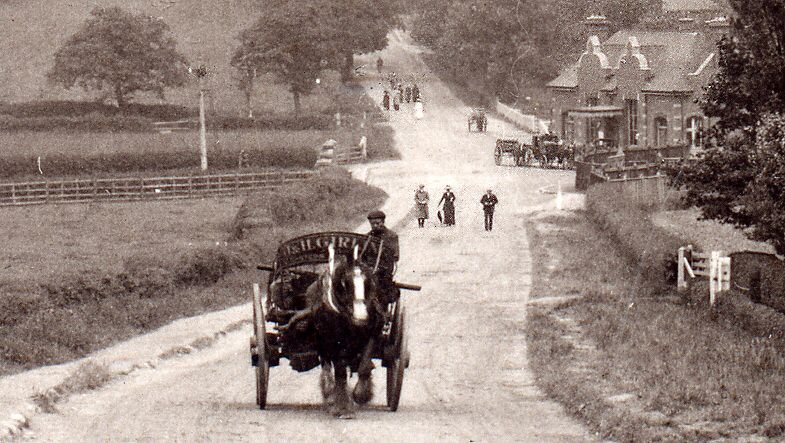
Detail from the above postcard. The railway line goes under the road bridge on which the station is built in a similar style to Chigwell. This was damaged during the war and a new station was rebuilt. A very tall signal can be seen from the track on the left. An Edwardian lady and two gents are walking uphill. The Horse and Cart is carrying coal and bears the name J & H GIRLING.

1869 advertisement
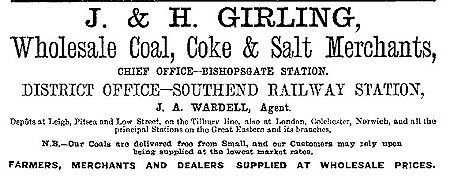
1874 advertisement
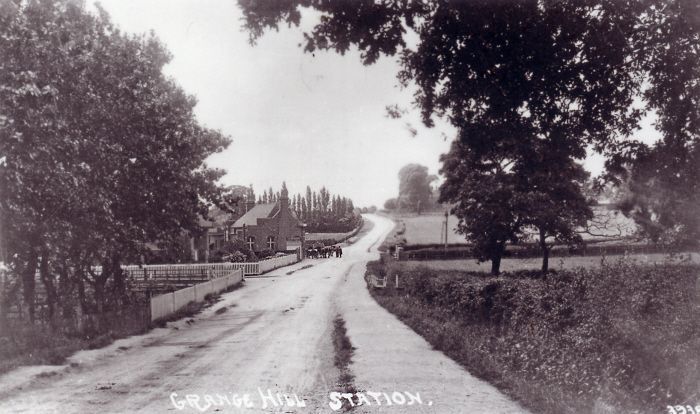
View towards Bald Hind and Woodford. Carriages await at the station.
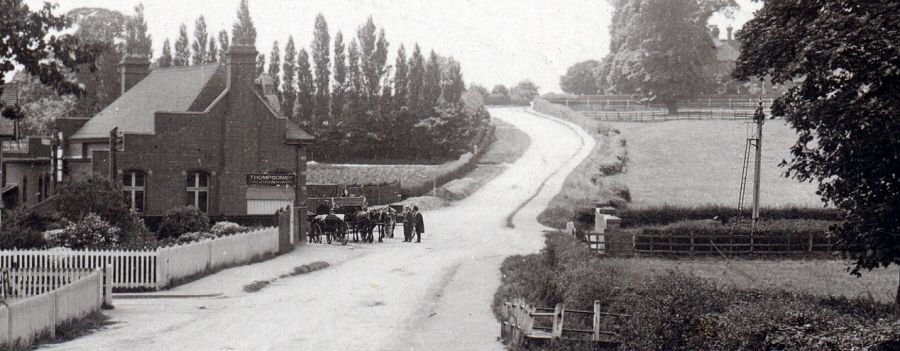
The tall signal can be seen in the cutting right. Function unknown but could be for the ticket office to know a train was approaching.
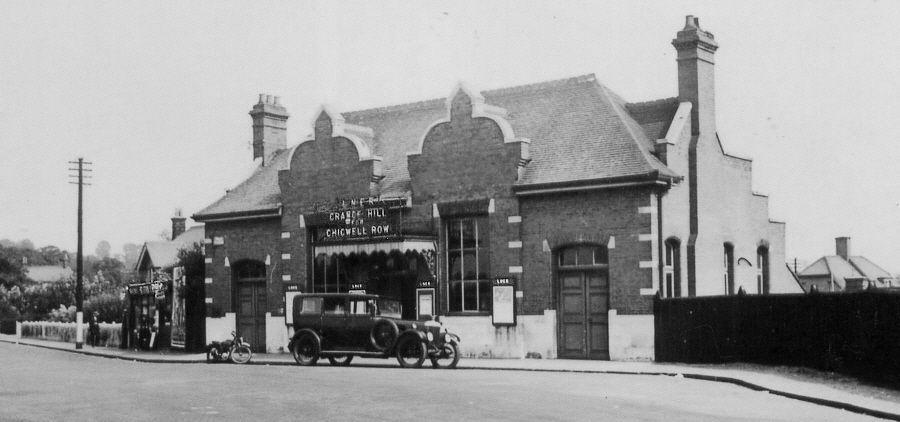
The station sign Grange Hill for Chigwell Row, which was over a mile away. Horse and carriage and taxis served the local villages.

Ex GER 2-4-2T locomotive and train passing under Grange Hill Station ticket office towards Hainault.
G.E.R. Nursery between Grange Hill and Chigwell Stations
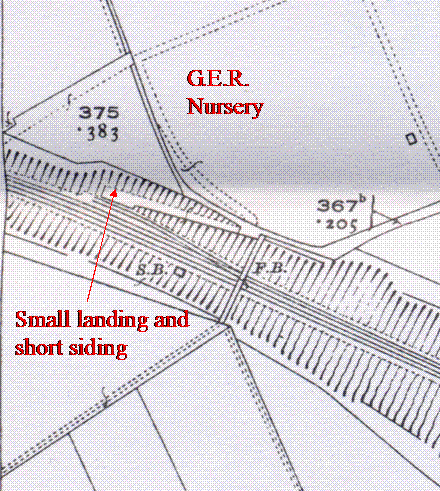
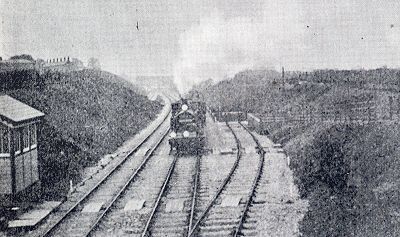
A Great Eastern Railway Nursery was set up between Grange Hill and Chigwell Stations to provide fresh fruit and vegetables for The Great Eastern Hotel. The produce was carried down the embankment by horse and cart and the train was shunted from the main line into the siding. The signal box controlling the line and the siding can be seen in this old picture from 1910. Picture taken from the footbridge. At the top left of the picture a row of chimneys indicate the houses in Hainault Road, Chigwell

CHIGWELL STATION

The sign above the door shows G.E.R. Chigwell. Horses and carriages await passengers.
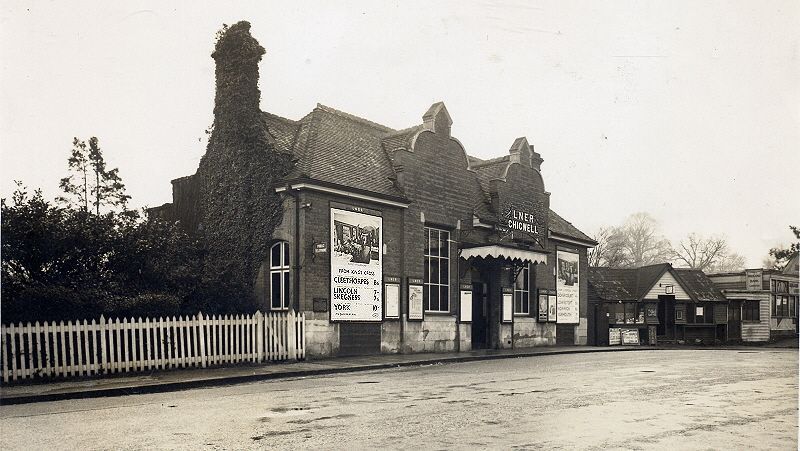
Later LNER Chigwell shows a Tea shop and a Midland Bank 1935.

Close up of above postcard. 1935.
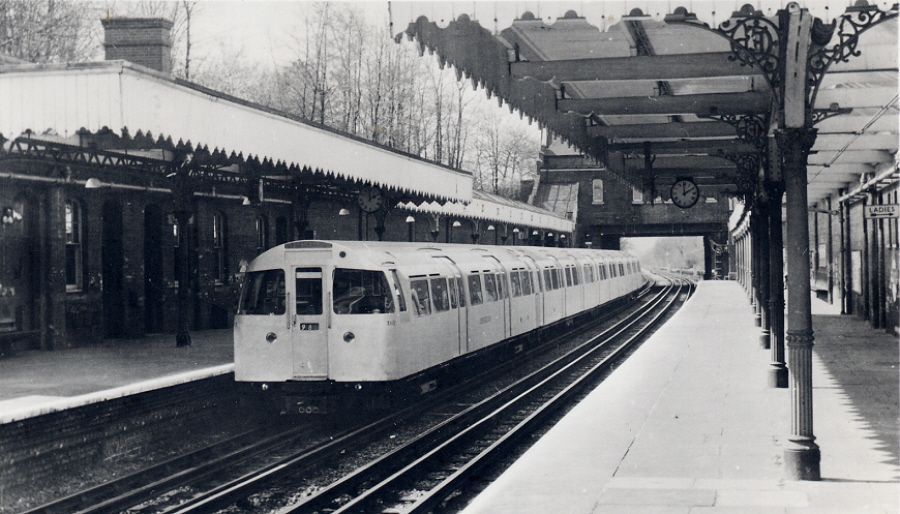
Experimental Automatic Tube trains were used on this stretch of line. 5th April 1960
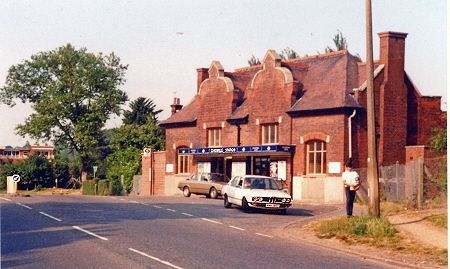

RODING VALLEY HALT
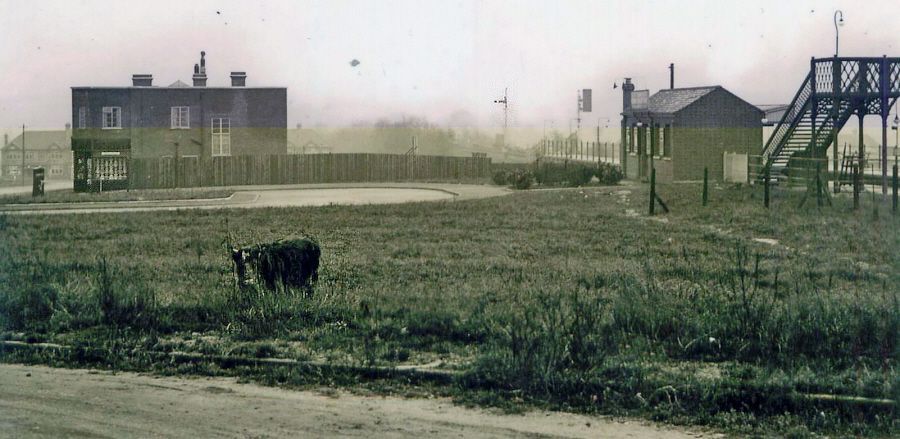
When the loop was constructed a simple Halt was put in place, to allow passengers to alight before the line joined the Epping line to Woodford. A shop, a footbridge, a ticket office and a cow complete the scene.
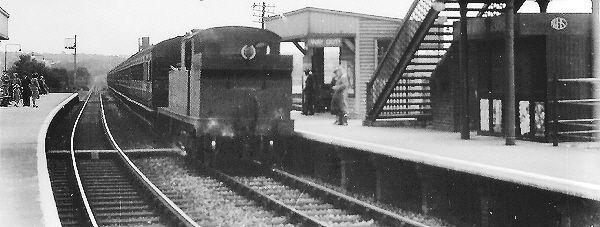
Passengers awaiting the train. A W.H.Smith booth is an addition to the meagre facilities.
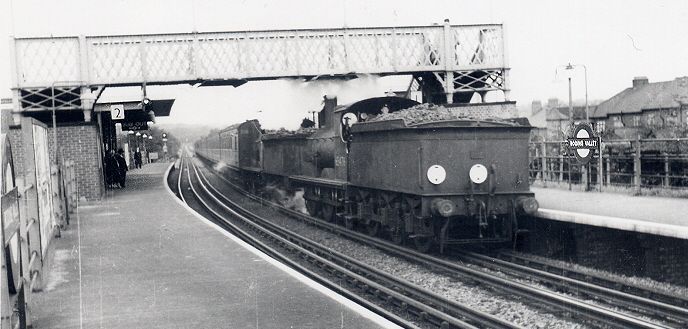
A J15 Steam engine hauling the train to Woodford during electrification of the line at Roding Valley. Two modern signals can be seen on platform 2 to Chigwell
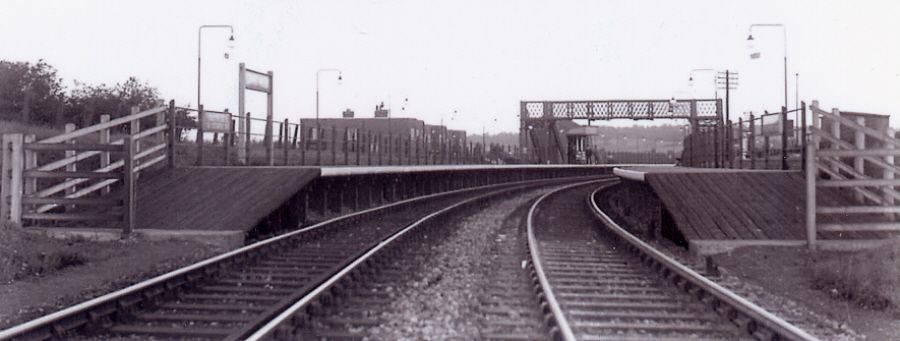

WOODFORD STATION
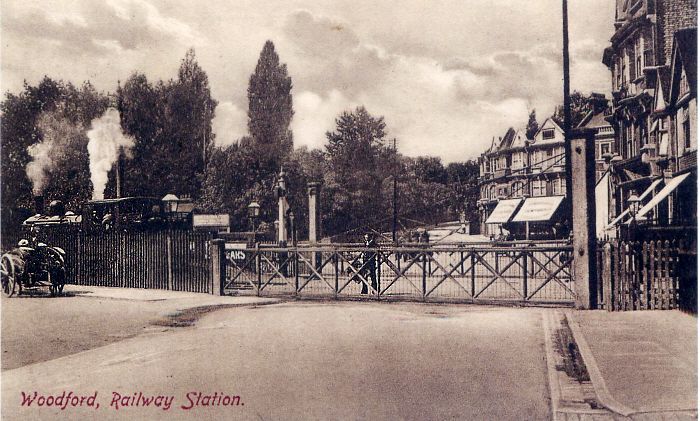
Level crossing in Snakes Lane controlled by a station official. A lone engine has just crossed the road.
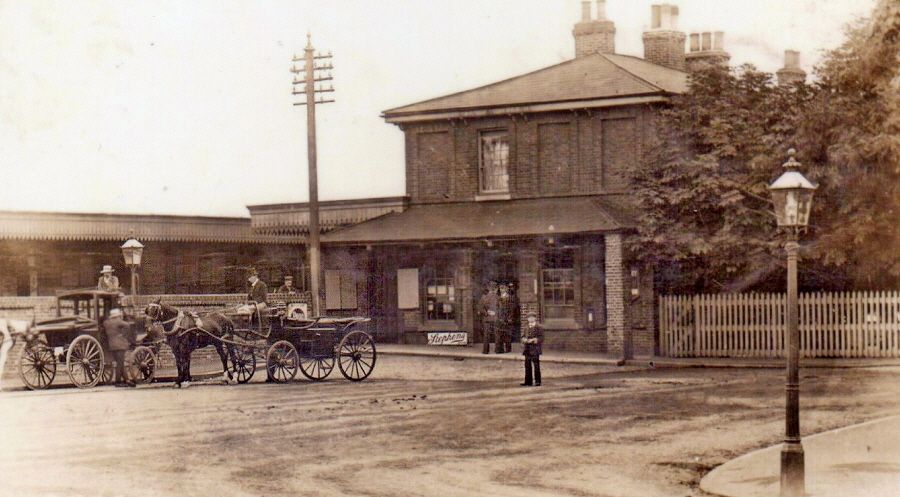
Carriages await their fares. A poster advertises Stephens Ink, and watch where you walk - only horse power here.
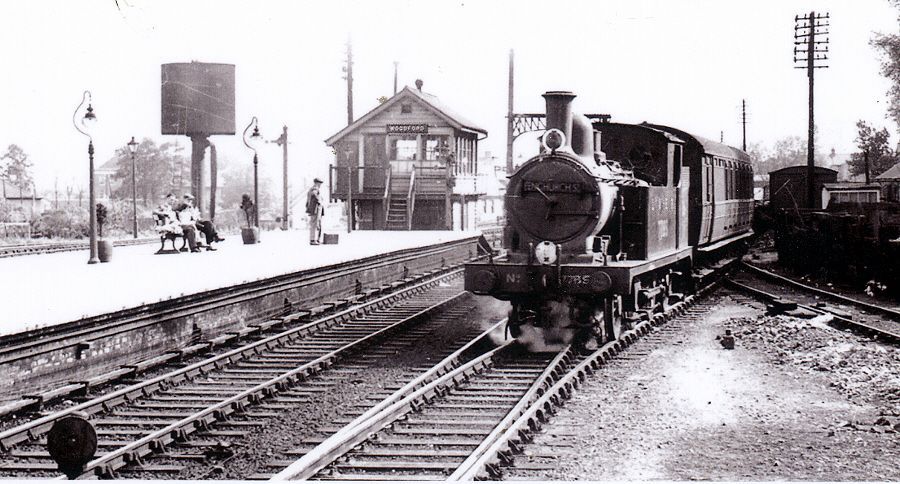
LNER (Ex GER) locomotive 7785 2-4-2T in June 1938 entering Woodford Station from sidings to form a train to Fenchurch Street via Fairlop.
Written by Brian Ecott. Thanks to Raymond Small for additional memorabilia and research.